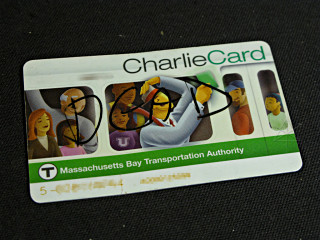
A friend had one begin to go bad after developing a crack along one edge, and then finally die completely. It was pretty obvious that the antenna coil had broken open. A closer look at the card's innards seemed appropriate.
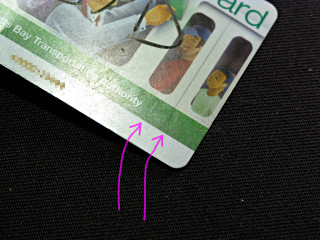
| When the card is lit from just the right angle, a small region becomes evident with two slightly dipped shapes on either side. This is where the embedded chip sits. |
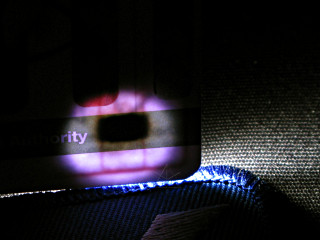
| A strong light behind the area and through the plastic clearly shows the shape of the chip inside, and the coil wires leading up to it. |
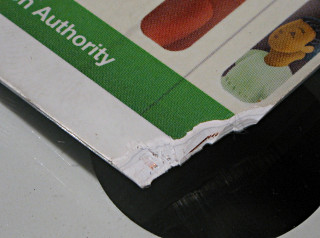
| Shaving off one corner shows the plastic layering, and how the coil wires run through the mid-layer. |
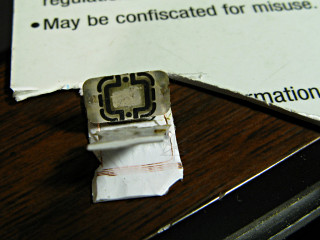
|
The back of the chip carrier, showing the interconnects.
Is this misuse? Do we think they'd want this one back? |
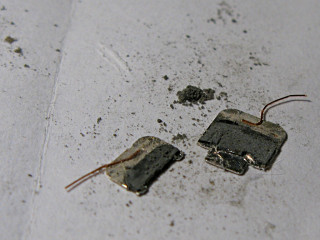
| More shaving and attempts to cut in around where the actual chip sits quickly leads to more destruction. |
|
What happens at the RFID and software levels is far beyond the scope of this,
but an extensive overview and policy/design discussion can be found
here
if you're able to deal with windows .DOC format or can find a cached copy
of the text. Googling for "transit" and "contactless smart card" and "mifare"
will find numerous other starting points for further study.
It is already clear that the system is not as secure as hoped; evidently some students have performed some deep analysis [which involved doing similar procedures, but much more carefully] and report weaknesses in the encryption and other interaction that the cards do with the readers. Read about it here. |